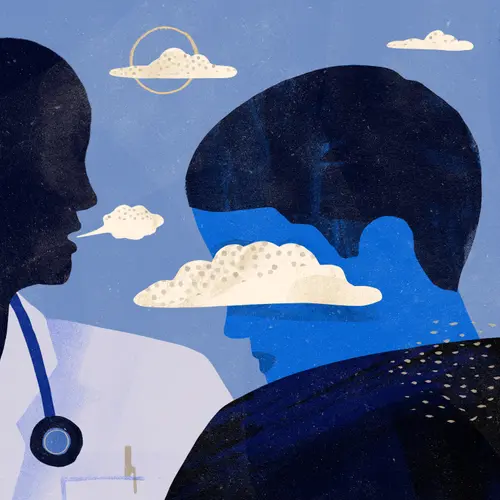If overuse of alcohol or drugs harms your health or causes trouble at your home, school, or job, experts call this substance use disorder (SUD). No one knows for sure what causes SUD. Many things, including emotional distress, anxiety, and depression, probably play a role.
If you’re transgender or nonbinary, discrimination and stigma may lead to these types of mental health challenges. Many experts think this is largely why transgender and nonbinary people have a higher risk of SUD than other people.
About 1.4 million people in the U.S. are transgender. Those who are transgender identify with a gender that differs from the one they were assigned at birth.
Nonbinary people don’t identify as exclusively male or female. They may think of themselves as feminine, masculine, both genders, or neither gender. Many nonbinary people identify as transgender, but research shows that most do not. In the U.S., about 1.2 million people identify as nonbinary.
Which Substances Do People With SUD Use Most Often?
SUD can involve many substances, and sometimes more than one. These include:
Depressants. They make you feel drowsy and may ease anxiety. Depressants include alcohol, barbiturates, and benzodiazepines like Ativan, Valium, and Xanax.
LSD, mescaline, and psilocybin (“mushrooms”). These substances can cause you to see things that aren’t there (known as hallucinations).
Marijuana (also known as cannabis, weed, pot, and dope). It has many health risks, including a higher chance of stroke and heart disease.
Opiates and other narcotics. These powerful painkillers may also cause you to feel a strong sense of well-being. They include heroin, opium, codeine, and narcotic painkillers.
Stimulants. These drugs stimulate your brain and nervous system. They include cocaine and amphetamines, such as drugs used to treat ADHD (methylphenidate or Ritalin).
How Common Is Substance Abuse in Transgender and Nonbinary Communities?
Beginning in the 1970s, research on “sexual minorities” focused on lesbian, gay, and bisexual people. Now, scientists more often include transgender and nonbinary people in their studies.
Research shows SUDs are considerably higher among transgender people than those whose gender identity matches their birth sex (known as cisgender people). For example, compared with cisgender people, the use of any drug was 3.6 times higher among those who were transgender. Transgender people also had:
- 5 times the rate of marijuana-related SUDs
- 4 times the rate of cocaine SUDs
- 3 times the rate of opioid SUDs
In another study, 47% of transgender adults reported binge drinking in the previous 3 months, compared with 17% of the general population.
Younger transgender adults (age 18-25) are more likely than older transgender people and cisgender people of all ages to have any type of SUD except nicotine-related SUDs.
Research on nonbinary people is emerging slowly. One study found more nonbinary people in their 20s and 30s than in any other age group. Compared with binary transgender people, nonbinary people have higher rates of depression, anxiety, and illicit drug use.
Other research found no meaningful difference in the rate of alcohol use between transgender and nonbinary groups.
Special Needs of Transgender and Nonbinary People
Psychological stress linked to their gender identity presents serious mental health challenges for transgender and nonbinary people. Doctors diagnose half with depression and anxiety, compared with 20% of the general population. Suicidal thoughts also are more common. Up to 41% of transgender and nonbinary people have attempted suicide.
Substance use in transgender and nonbinary people often begins in adolescence and early adulthood. These groups may use substances as a way to deal with their fear of rejection and the stress of concealing their identity.
Studies show that transgender and nonbinary people who get support from their parents, families, and friends have improved mental health and well-being. A lack of positive affirmation has the opposite effect.
What Options Are Available to Treat SUD?
Gender-affirming treatment programs that focus specifically on the needs of transgender and nonbinary people dealing with SUD are relatively rare in the U.S.
To find a treatment program for LGBTQ people, check:
The Substance Abuse and Mental Health Services Administration’s treatment locator. Enter your city or ZIP code. Then click on “Search Facilities” under “Find Facility” and look for “Lesbian, gay, bisexual, transgender, or queer/questioning (LGBTQ)” in the dropdown. Or call 800-622 HELP (4357).
Outcare’s “Find an LGBTQ+ Competent Healthcare Provider” web page. Search by state to find health care providers who specialize in treating substance use disorders.
Local community centers. Many cities across the U.S. also have LGBTQ health centers where you can find out about treatment programs. Examples include the Callen-Lorde Community Health Center in New York City, the Los Angeles LGBT Center, and the Center on Halsted in Chicago.
Alcoholics Anonymous webpage. They offer a free PDF describing the experiences of 13 LGBTQ people with alcohol use disorder who got help in AA.
Trans Lifeline. Transgender people run this nonprofit group to offer emotional and financial support to those in crisis.
The Trevor Project. This nonprofit group provides support services to transgender and nonbinary youths. From their website, you can call, text, or chat with one of the group’s counselors 24/7.
LGBTQ+ Suicide Prevention Hotline. This resource offers suicide prevention and support for mental health challenges. Call or chat with crisis counselors 24/7.
